How to Trim the Bottom of a Door
When you need to cut the bottom of a door, use a straightedge, a circular saw, and these tips for an accurate and clean job.
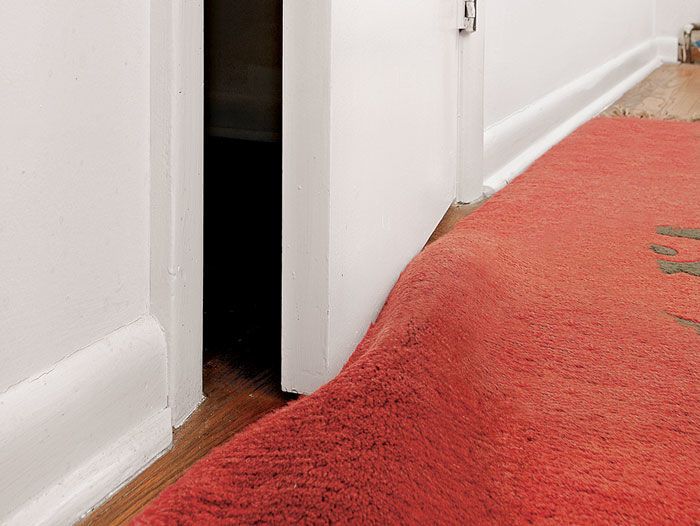
Do you know the difference between “hanging a door” and “installing a door?” Though these terms often are used interchangeably, today, there is a distinction. Before the rise of prehung doors, carpenters used to install the door frame, and then “hang” the door within the frame. The skill set to hang a door included, trimming and beveling the door, mortising hinges, and installing passage sets, lock sets, and deadbolts, among other things. Today, it’s more common to just “install” prehung doors. Still, there are lots of reasons why you may need to trim a door, reasons that often pop up during remodeling projects.
The necessity of trimming a door goes along with remodeling projects where the floor rises because of added carpeting, new tile, or extra layers of subflooring (or in my case, whenever my penchant for area rugs gets the best of me). As someone who has remodeled other people’s homes as well as my own, I have tackled this project over and over. To trim a door problem-free, I call on the same skills I use for other finish-carpentry projects, such as built-ins, wainscoting, and countertops.
Although you can use straight-edge guides, track saws, and zero-clearance throat plates to cut finished work, I use a 4-ft. level clamped to the door and a thin-kerf blade in my circular saw for a task like this. I also use a utility knife to score the door and some masking tape to protect the surface of the door. Finally, I need a gauge block, which I usually make from a piece of thin plywood. Here’s a step-by-step look at my process for trimming a door bottom:
| Step 2: Draw the cutline. With the door taken off of the hinges and set on sawhorses, I connect the two marks with tape, then use the level to draw a straight line between them. | 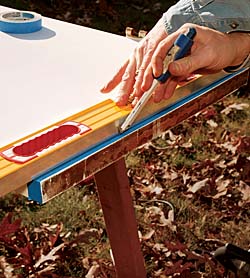 |
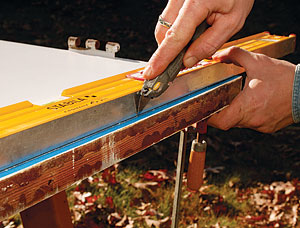 |
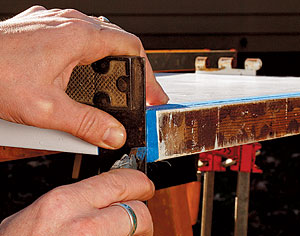 |
| Step 3: Score the cut to prevent tearout. Clamped to the door, the level works well as a guide while I make several shallow passes with a utility knife to score the cutline. As an extra precaution, I tape and score the end of the door where the saw’s blade will exit. |
The right blade for a clean cut
For general finish work, I use a sharp thin-kerf blade in my circular saw. It removes less material, so it’s easier on the saw. I’ve had good results with Freud’s Diablo 24-tooth framing blade (D0724X), which costs about $10 (www.freudtools.com). Although you can buy pricier finish-cutting blades with more carbide-tipped teeth, this framing blade delivers smooth cuts and doesn’t overwork the saw.
Photo: Courtesy of Freud
Photos by: Charles Bickford, except where noted

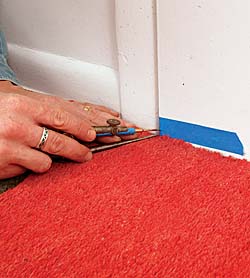
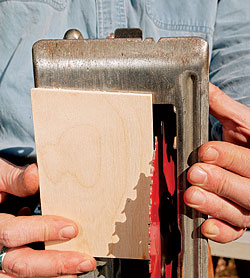
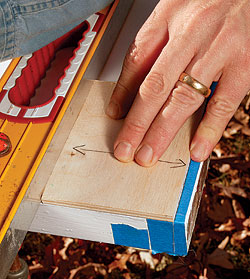
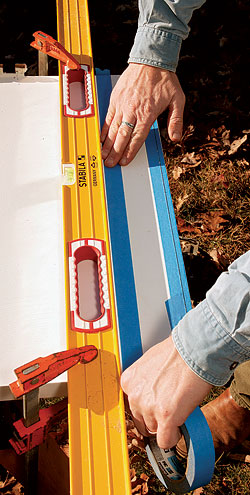
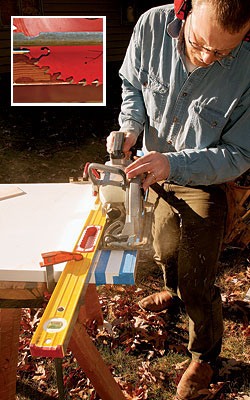
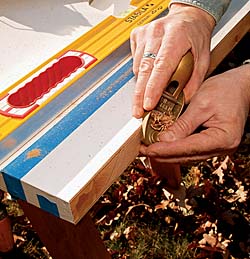
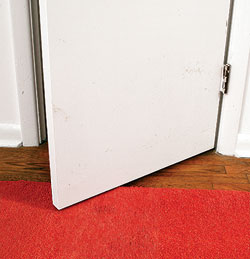






View Comments
just buy a festool tracksaw. it seems expensive before you buy it, but you can trim that door with no tape, no level, no clamps, no need to draw the cut line. mark the end points, lay down the track, make the cut. done. you will use this thing for the rest of your career. it is expensive on the day you buy it, and worth it, every day after that.
Seal the cut edge with some primer after cutting to keep moisture out. I keep a small can of 123 water based primer and a bunch of chip brushes in truck. Just be sure to let it dry before fitting, especially with carpet.
Keep in mind that today's cheap hollow core doors have little wood at the bottom. I trimmed ~1" off a bathroom door and found nothing left reinforcing the skins at the door's bottom.